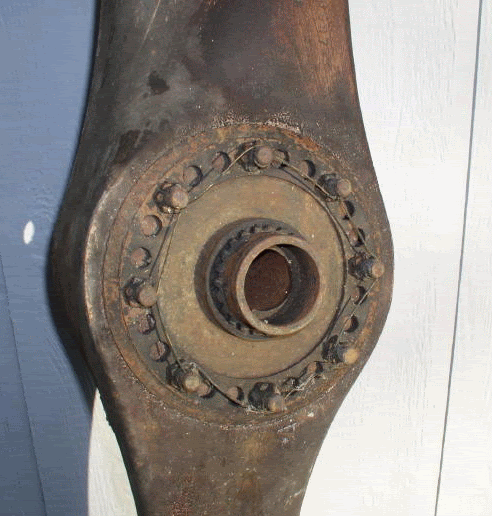A friend gave me a wooden propeller that had belonged to his father.
Stamped on the propeller:
Drawing #16997
D 80" P 4' 8"
Hub measurements as described on "Measurement of Hub Dimensions from woodenpropeller.com web site.
B- Center bore diameter (outside) 5 5/8"
C- bolt hole circle 6 11/16"
D- diameter of hub 8 1/2 "
E- Number of bolt holes 8
F- Bolt diamaeter 1/2 "
G- Hub Diameter/ Wooden hub thickness 5 3/4"
Photos will be attached shortlly.


Anybody know what engine/aircraft this prop was used on.
Gregg
Stamped on the propeller:
Drawing #16997
D 80" P 4' 8"
Hub measurements as described on "Measurement of Hub Dimensions from woodenpropeller.com web site.
B- Center bore diameter (outside) 5 5/8"
C- bolt hole circle 6 11/16"
D- diameter of hub 8 1/2 "
E- Number of bolt holes 8
F- Bolt diamaeter 1/2 "
G- Hub Diameter/ Wooden hub thickness 5 3/4"
Photos will be attached shortlly.


Anybody know what engine/aircraft this prop was used on.
Gregg
Comment